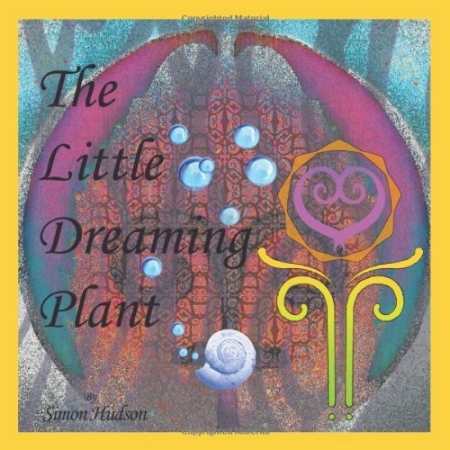The Little Dreaming Plant
How did jellyfish and toadstools come to be? Why is the world round, and why is the sky blue? How can crabs predict the future? The well-imagined answers to these and other questions can be found in Simon Hudson’s fantasy picture book, The Little Dreaming Plant.
In some ways reminiscent of Rudyard Kipling’s Just So Stories, The Little Dreaming Plant is both an art book and a storybook, with mostly one-page vignettes, each accompanied by a colorful, evocative illustration. Hudson’s premise is both simple and ingeniously expansive: The world, and everything in it, has been created through the dreams of a single dreaming plant.
Simon Hudson studied fine art at Bretton Hall College, trained under a master stone carver for five years, and currently teaches creative art to children. He also has two children of his own, so the art of storytelling, combined with the visual imagery that he uses in this fantasy, seems like a natural fit.
The imaginative, dreamlike tone is set early, when Hudson describes the dreaming plant itself in hypotheticals: “Maybe she sleeps all the time because a powerful witch cast a spell upon her. Maybe she sleeps because she once yawned so big and long that a dreaming spider crept inside her flower and wove a silky web around her alarm clock so that she would never wake up.”
The book also shows a sense of humor, as when describing vultures as only able to fly in circles: “They often get lost if a wind picks up.” Yes, there are times when the descriptions of dreams get to be a bit twee—for the most part, however, The Little Dreaming Plant is enjoyable throughout. The writing is intimate and conversational, so readers will either fall deeply under its spell or quickly put up a wall.
It’s somewhat difficult to pinpoint the ideal reader age for this book. Some children may have difficulty understanding Hudson’s fantastic speculations, leading to repeated queries of “Is that really true?” Some adults may have a similar response to a book that so directly requires readers to stretch their imaginations. But perhaps that’s the point of The Little Dreaming Plant—to challenge, to delight, and to serve as a reminder that readers of any age should occasionally look at things from a different point of view.
Reviewed by
Peter Dabbene
Disclosure: This article is not an endorsement, but a review. The publisher of this book provided free copies of the book and paid a small fee to have their book reviewed by a professional reviewer. Foreword Reviews and Clarion Reviews make no guarantee that the publisher will receive a positive review. Foreword Magazine, Inc. is disclosing this in accordance with the Federal Trade Commission’s 16 CFR, Part 255.

